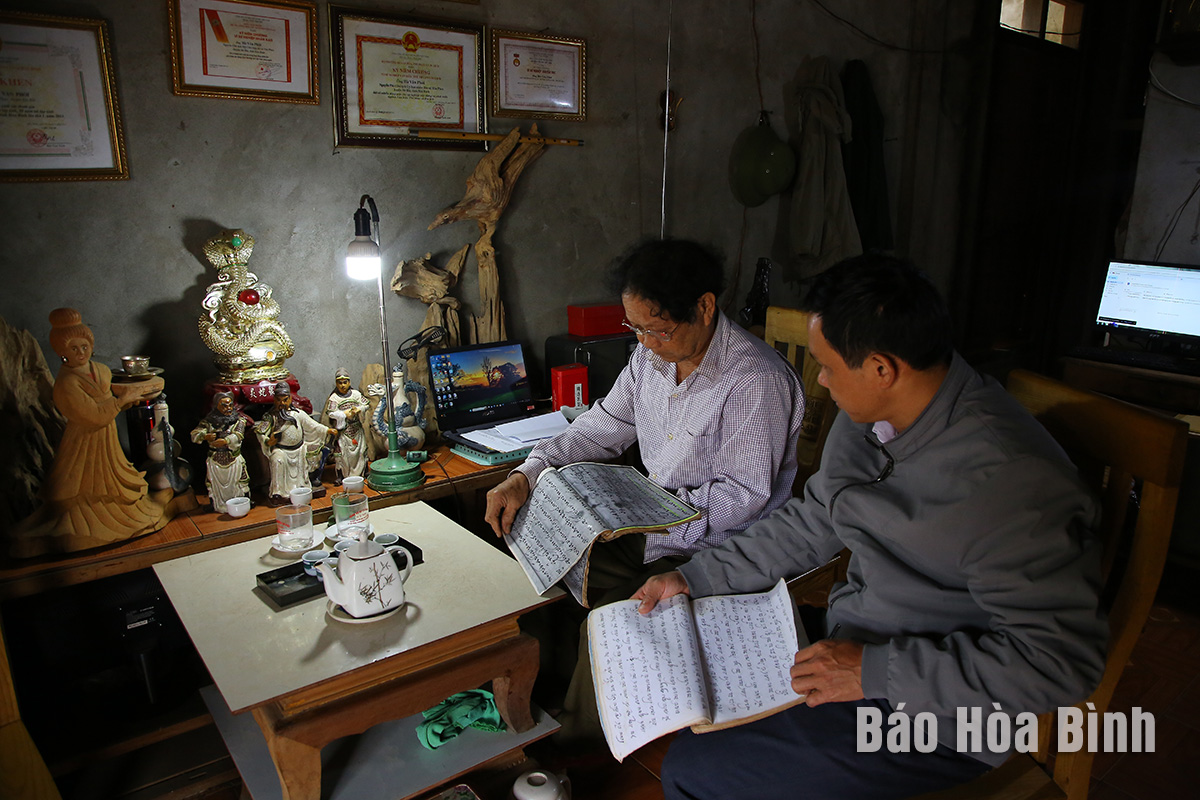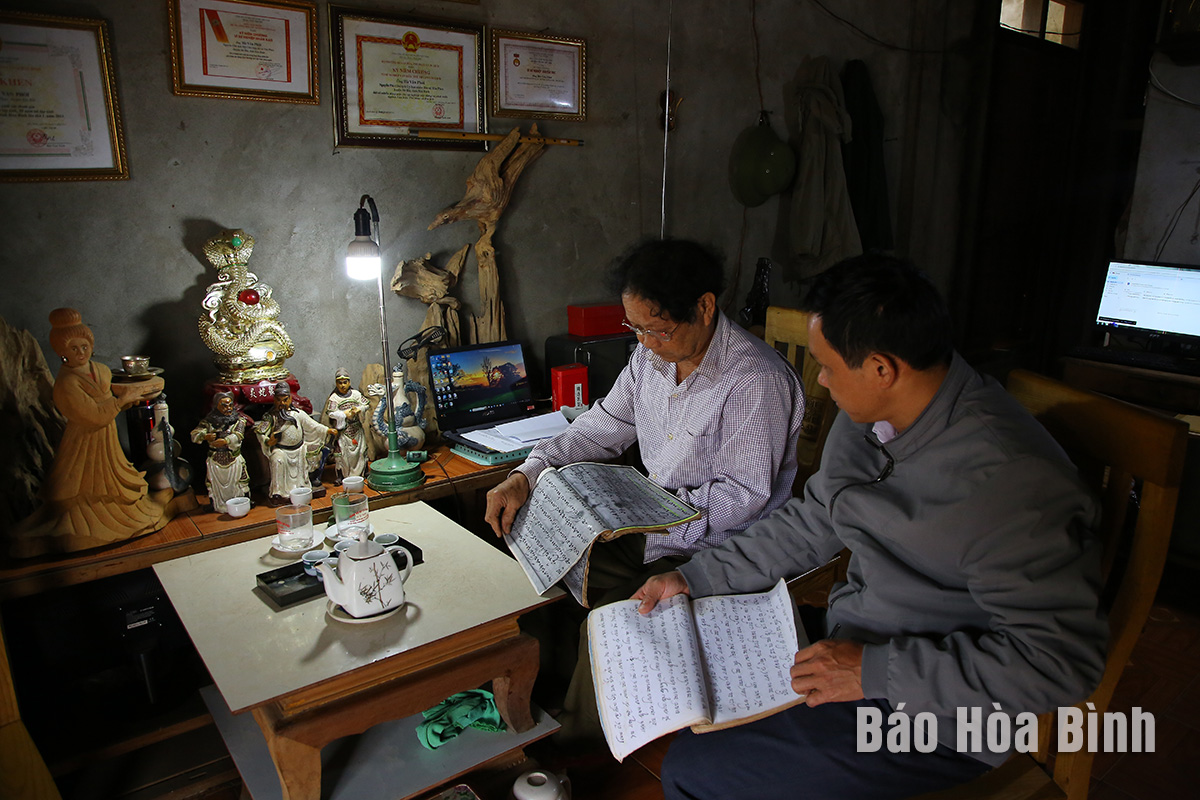
Tan Pheo commune in Da Bac district has been long inhabited by people of several ethnic minority groups such as Tay, Dao and Muong. Each ethnic group has its own culture and unique customs during Tet. For the Tay people, although life has changed a lot, their cultural identity and customs of celebrating the Lunar New Year are still preserved and passed down.

Ha Van Phoi (sitting inside) in Tan
Pheo commune (Da Bac) knows and preserves many traditional cultural values of
the Tay ethnic group in the locality.
Ha Van Phoi, who knows many traditional
cultural features of the Tay ethnic group, shared that the Lunar New Year is
the most important and biggest festival in a year of the Tay people. Their
custom of welcoming Tet includes two stages: "het khau mo" which
means the new rice celebration, and "het set – het chieng" which
means the custom of welcoming the Lunar New Year, and is prepared from the last
lunar month. The new rice and Lunar New Year celebrations start in the period
from the first to the third day of January. The worshiping part usually has two
rites: worshiping ancestors and worshiping the Land Genie and those who govern
and look after the place where the family lives, with a hope that the ancestors
and genies will help protect the family.
On the morning of the first day of the
lunar new year, the Tay people have the custom of waking up early and going to
the garden to pick the greenest and freshest leaves to bring home with the
belief that they will bring lots of fortune and luck in the new year. Going to
a neighbour's house, they will wear white to bring luck and ward off bad luck.
The new rice celebration has been preserved
to this day. October is the month of rice harvest, families are happy because
the hardships of the between-crop months are over. They use new rice to worship
their ancestors.
Ha Van Le, Vice Chairman of the Tan Pheo
commune People's Committee, said that the Tay ethnic group accounts for 74% of
the commune’s population. The Tay people have many unique cultural features
such as their own language and writing, customs and practices during holidays,
Tet, weddings and funerals. Their costumes and houses are also made in their
own style.
With an increasingly vibrant and widespread emulation movement aimed at building cultured residential areas and cultured families, Yen Thuy District has been making steady progress toward improving both the material and spiritual well-being of its people, while fostering a civilized, prosperous, beautiful, and progressive community.
Once lacking recreational spaces and community facilities, Residential Group 2 in Quynh Lam Ward (Hoa Binh City) has recently received attention for the construction of a new, spacious, and fully equipped cultural house. The project followed the model of state support combined with public contributions in both labor and funding.
The "All people unite to build cultural life" movement, which has been effectively integrated with Kim Boi district’s socio-economic development goals, is fostering a lively spirit of emulation across local residential areas, hamlets, villages, public agencies, and enterprises. In addition, through the initiative, traditional cultural values are being preserved and promoted, while community solidarity and mutual support in poverty reduction and economic development are being strengthened.
A working delegation of the Hoa Binh provincial People’s Committee led by its Permanent Vice Chairman Nguyen Van Toan on June 11 inspected the progress of a project to build the Mo Muong Cultural Heritage Conservation Space linked to tourism services in Hop Phong commune, Cao Phong district.
Born and growing in the heroic land of Muong Dong, Dinh Thi Kieu Dung, a resident in Bo town of Kim Boi district, in her childhood was nurtured by the sweet lullabies of her grandmother and mother. These melodies deeply imprinted on her soul, becoming an inseparable part of her love for her ethnic group's culture. For over 20 years, this love for her hometown has driven Dung to research, collect, and pass down the cultural values of the Muong people to future generations.
In the final days of May, the Ethnic Art Troupe of Hoa Binh Province organized performances to serve the people in remote, mountainous, and particularly disadvantaged areas within the province. These were not just ordinary artistic shows, but they were the meaningful journeys aimed at spreading cultural values, enhancing the spiritual life of the people and contributing to the preservation of ethnic minority cultural identities.



